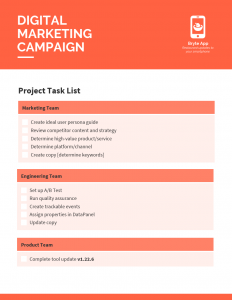If you’re a wholesale distributor or manufacturer with a B2B eCommerce channel, you probably already know you need to integrate your ERP with your eCommerce application in order to gain maximum efficiency in your order and fulfillment processes. But what you may not know is the best way to go about doing this and obstacles that may stand in your way.
In this post, we’re going to take a look at some of the benefits, challenges and best practices in integrating ERP solutions with a B2B eCommerce portal, with a focus on the needs of manufacturing and distribution businesses.
Benefits of Integrating ERP Solutions with eCommerce
There are multiple benefits to integrating ERP Solutions with eCommerce, including significant reductions in the amount of time it takes to enter order data while also reducing errors related to data entry. Other benefits include better inventory control and more accurate and timely information for customers.
Integration also provides real time access to shipping and payment information. This is a crucial consideration for B2B eCommerce customers who typically have long-standing agreements about how they receive and pay for products.
Integration Challenges: ERP Solution Complexity
Your ERP solution is the main repository of data about your business and customers. It provides a single source for everything from your financial and customer information, to inventory and warehouse management, to invoices and shipping data, and more.
However, with this volume comes complexity, and this complexity can create challenges for your integration project with eCommerce. Some of these challenges include:
1) Decision-making – Because ERP solutions are complex, as is eCommerce, deciding which specific business processes need to be integrated is the first and probably most difficult challenge your integration project will face. Integrate too much functionality and your integration project becomes expensive and difficult to manage. Integrate too little, and your processes won’t work as they should.
2) Goal-setting – Once you know what parts of your ERP solutions to integrate with eCommerce, you then have to know what you ultimately want the integrated processes to look like. What should users and customers be able to do?
3) Customizations – ERP solutions can be implemented “vanilla” or out of the box, with basic functionality, or they may be heavily customized to make them work a specific way in order to support a company’s unique business processes. When there are a lot of customizations, this can impact your integration and lead to cost overruns and delays on your integration project. Avoid this by understanding how any customizations will impact your project in advance.
Best Practices in Integrating ERP Solutions with eCommerce
Nearly 40% of manufacturers surveyed believe ERP is the vital platform that connects the back office and front office. Nearly 85% of organizations with 5,000 employees or more indicated that their ERP solution was the key element in delivering a great customer experience for their B2B customers.
So how can you ensure that your integration project lives up to its potential? Here are five best practices that will keep your integration project on the right track:
1) Develop your strategy and business case for the integration – Integration for integration’s sake is the expensive way to get your ERP solutions and eCommerce systems talking, so it’s important to know why you are doing the integration and what you want to accomplish from it. This will enable you to be laser focused on those integration points that will add value.
2) Involve the right team – You need to get the right people working together on the integration project, with stakeholders from the right business areas contributing at the leadership and user levels. At minimum, someone should represent and bring institutional knowledge from both the ERP and eCommerce side, and ideally, you would have people from each business unit that will be touched by the business processes the integration is intended to streamline – inventory, sales, customer service, financials, etc.
3) Put someone in charge – As you might already have surmised from the list above, having a big team with no one in charge is not a recipe for success. Someone needs to be the project owner and driver.
4) Plan your integration points carefully – Looking at the list of challenges above, we know that decision-making around what specific points need to be integrated between eCommerce and ERP solutions is one of the biggest challenges your project will face. So it’s critically important to understand your workflow and the optimal flow of data between the two systems. Where is your data coming from? Where is it going to? Does it need to flow one way or both ways, and how often should it be flowing – in real time, on-demand or in batches?
5) Preparation is the key to success – All of the best practices listed here have to do with preparing your team and processes for a successful integration. You also need to spend significant resources preparing your data for the integration, making sure existing data maps properly as it moves between systems.
These are just a few of the best practices that can guide your eCommerce integration with ERP solutions to a successful conclusion that benefits both your customer base and your business.
Are you planning to integrate eCommerce with your ERP solutions, or have you completed an integration project in the past? What are the best practices you feel are most important to follow? We’d love to hear your feedback in the comments.
Digital & Social Articles on Business 2 Community(63)




